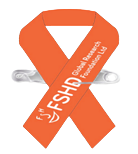GRANT 45
Research Institution: University of Minnesota
Principle Investigator: Professor Michael Kyba
Type: International – Minneapolis, USA
Project title: “Crystal Structure of DUX4 protein domains”
Status: Active
Summary
The genetic mutations that cause FSHD all lead to mis-expression of the DUX4 protein, thus potential therapies centre around inhibiting DUX4 activity. The DUX4 protein functions in the nucleus of the cell where it turns on a set of genes that are not compatible with healthy muscle. Our previous work has shown that one end of the protein binds DNA, while the other end of the protein interacts with various cofactors to regulate gene expression. We have recently determined the atomic structure of the DNA binding part of the DUX4 protein, and the current grant focuses on obtaining an atomic resolution structure of the part of the protein that regulates gene expression. Our work has shown the DUX4 interacts with two protein cofactors named p300 and CBP and that this interaction is central to the function of DUX4. We will probe the molecular structure of this part of DUX4 and determine how it interacts with p300 and CBP. This molecular detail will be valuable for designing and developing small molecule inhibitors of DUX4 function that could be developed into therapies for FSHD.
PROGRESS REPORTS
Update September 2019
Grant 45 – Crystal structure of DUX4 protein domains
DUX4 is a transcription factor, meaning that it binds to DNA and regulates other genes, basically turning them on when they should be off. We are investigating the molecular mechanisms that are responsible for the function of the DUX4 protein, with the view that by understanding how it works, we will be better able to design strategies to block it, which would be useful for the treatment of FSHD. Previous work from our group provided a detailed 3D structure of the part of the protein that binds to DNA. DNA-binding occurs at one end of the protein, called the N-terminus; we think of this end as the “front end” because it is the first part of the protein to be synthesized.
We are now focused on studying the structure of the “back end” of the protein, also called the “C-terminus”. We know that this part of the protein is essential to the function of DUX4 because if we remove the C-terminus, DUX4 is no longer toxic to the cell. This grant proposed to synthesize the C-terminus of DUX4 in very large (mg) quantities and to use this material to determine its structure. Since the start of the grant, we have synthesized the DNA constructs that we need to make the DUX4 C-terminus in bacteria, tested these DNA constructs at small scale, found a construct that worked well, and then scaled up the production using this construct to produce and then purify over 10 milligrams of the DUX4 C-terminus. We have thus met our first milestone. We will next be working on testing conditions to crystalize the protein, with the hope of generating a crystal that will be suitable for X-ray crystallography, which can give a detailed 3D chemical image of what the C-terminus of DUX4 looks like.




